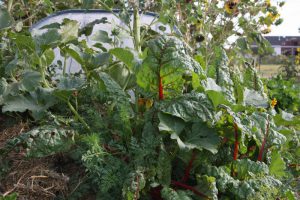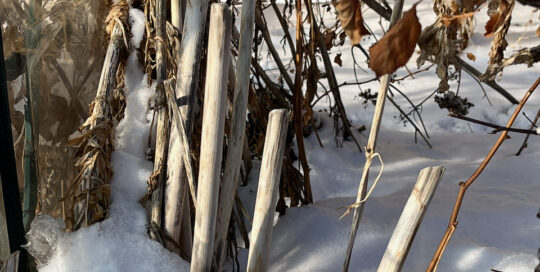Permaculture as Pest Control
Views: 3771

I’ve been learning more about permaculture as a means of making a more productive landscape while using fewer resources.
It’s not that I’m lazy and want to set up a system where I don’t have to do anything. I garden because I love it. But I would love to have a landscape where if I leave for a couple of days it’s not going to collapse. Or one that requires a lot less water than I currently use. (Not only is our water less than desirable, it’s expensive.)
If I managed to create water catchment systems, or hugelkultur beds that held their water, I would be pleased.
Permaculture: No-Till Gardening
In my constant search for knowledge, I am blessed to talk to people who know far more than I do. The latest has been while writing an article on no-till gardening. I spoke with Helen Atthowe (whom permaculture expert Paul Wheaton calls “the soil goddess”) about minimal or no-till systems. She had a 200 acre commercial vegetable operation for 20 years in Missoula, Montana. Currently, she is working at Woodleaf Farm in California.
She gave me great information on how to improve soil, and then maintain it using sheet mulching and planting cover crops. It’s a difficult concept to put into practice since I’m used to starting with a freshly turned under soil ready to plant. But the more I learn about it, the more I understand the benefits.
One point that really struck me was how she said no one has tilled the orchard where she works at in 30 years, and they have very few issues with pests. Most of us know that growing fruit trees can be a constant game of chasing what’s eating your produce. But imagine having cherries, peaches, figs and all sorts of fruit without depending on a spraying schedule to maintain the quality. She said they’re not absolutely blemish free. But I think most of us would be happy to have unsprayed fruit, whether the poison is organic or not.
Making Soil Healthier
Healthy soil means the balance of everything living – from the microbes in the soil to the birds and other wildlife. And since the natural predators are there in full force, they keep the nuisance species in check.
Even though we don’t have a terrible time with insects, I always have a few pests that make me want to tear my hair out. Cabbage moths, grasshoppers and earwigs are the top three that ruin my summer. Sure I can cover the crops with floating row covers and dust with diatomaceous earth, but I certainly would prefer not having to even do that. (I can deal with a few nibbles, but I don’t want the earwigs spilling out of the corn when you peel it back like they did last year.)
So I’m working on making the soil healthier. Where I spread dirt to make a new garden, I scattered a mix of peas and rye as a cover crop. I’ll plant after it comes up I’ll probably put cucumber plants in one area and corn next to it. If the cover crop grows too tall, and to prevent the rye from going to seed, I’ll cut it down along the way and set the greens on top of the soil to act as a mulch. The roots will break down in the soil adding to it. Little by little I will turn this dirt into true soil, and hopefully have less issues with pests in the future.
Meet Amy Grisak
Amy is a freelance author and photographer in Great Falls, MT who specializes in gardening, foods, and sustainable agriculture. She provides information on every kind…
Amy's Recent Posts

This Little Piggy is a Problem: Dealing with Feral Hogs








